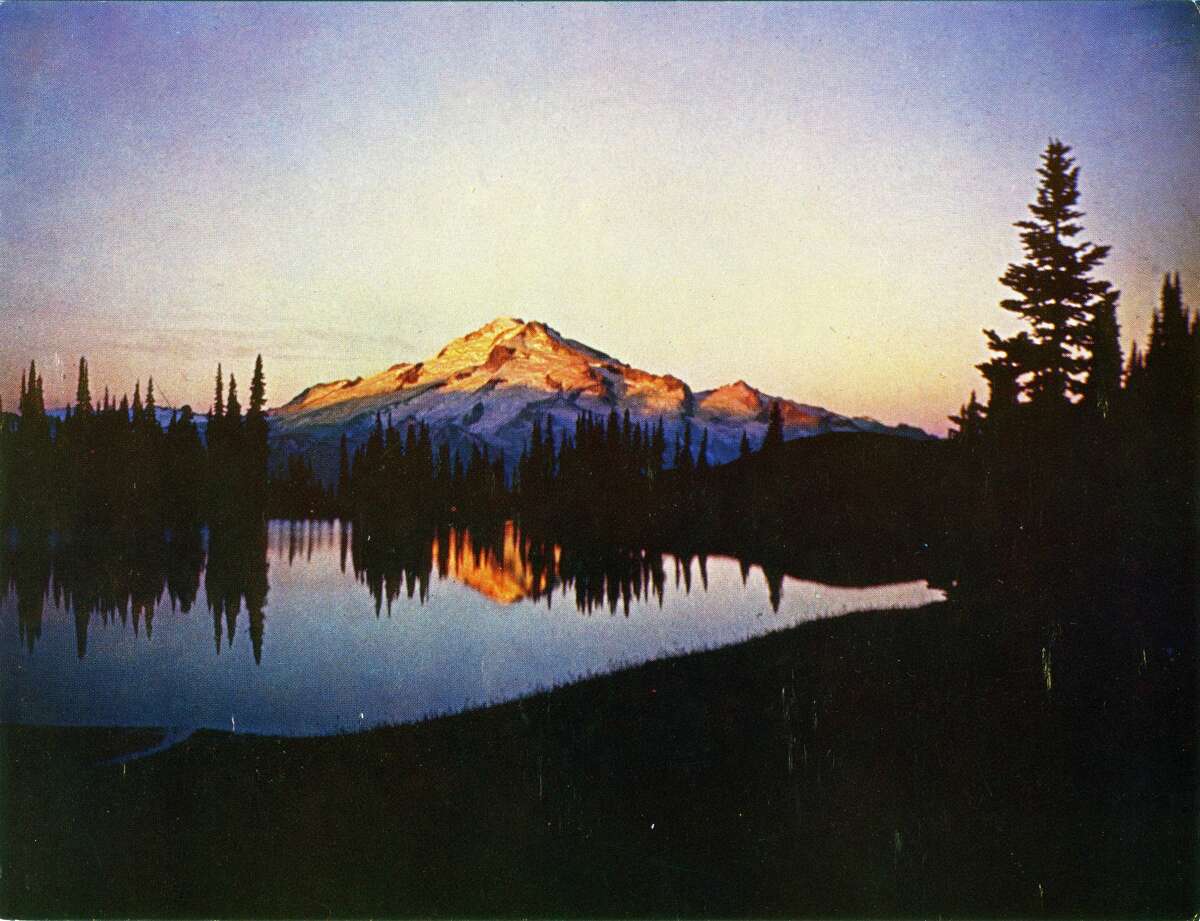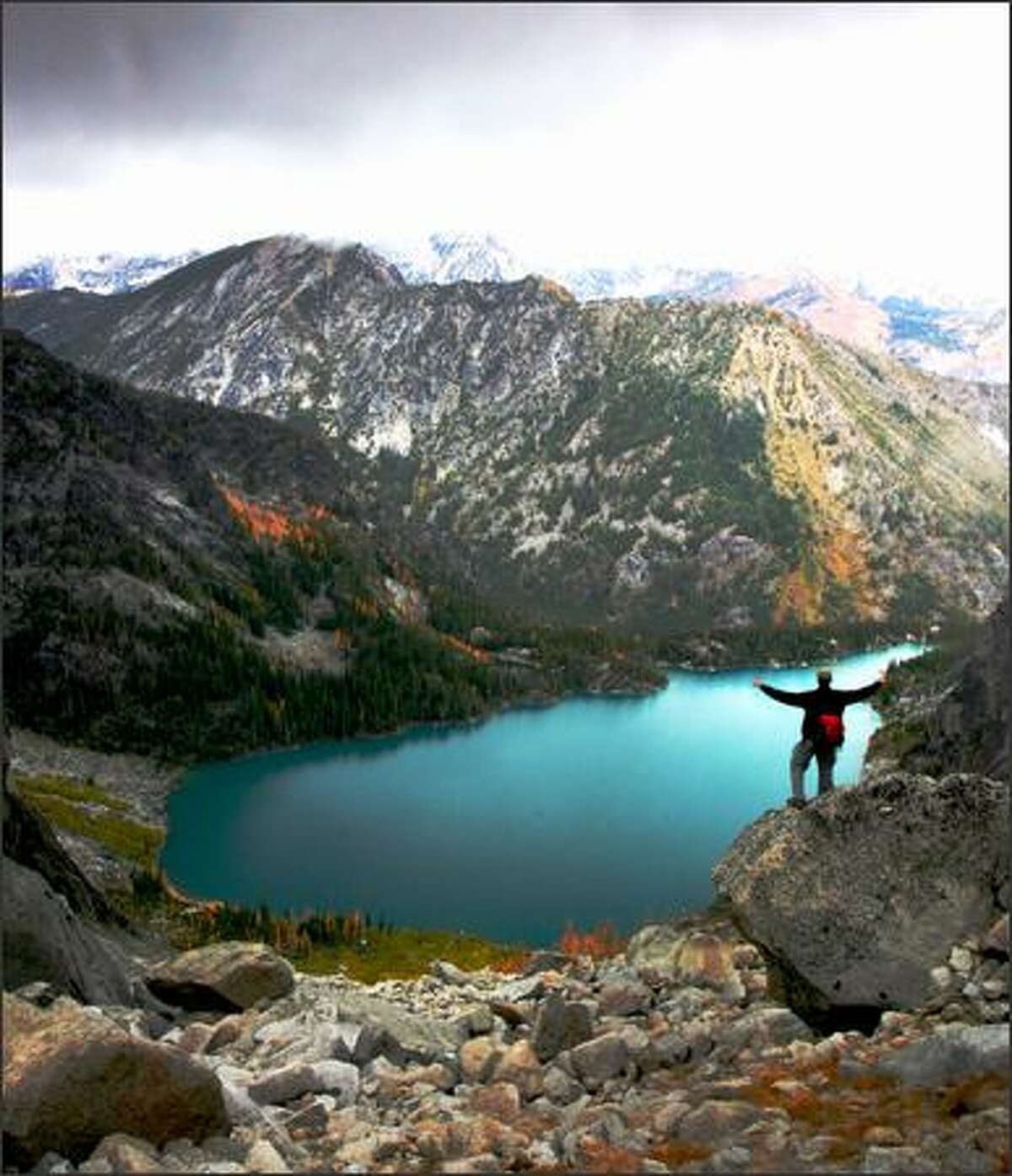The 'Elite Eight': Ultimate hiking destinations of Washington state
In one of my more memorable hikes, we scrambled up tundra-like terrain to the 7,800-foot top of Third Burroughs Mountain, anticipating its epic in-your-face view of the Willis Wall and Liberty Ridge on Mount Rainier. But we crested the summit just as a cloud arrived from the west.
We found ourselves in the middle of said cloud, creating a peek-a-boo experience with the Northwest's greatest peak.
The Willis Wall appeared, and disappeared, and then appeared again. The mist enveloped us, but half-a-vertical mile below the Winthrop Glacier was in sunlight. From above, I tried to recall where a climber friend, Stim Bullitt, had found himself stranded on Liberty Ridge after a storm, and calmly made instructions anticipating his demise. He lived to poke fun at himself.
The mountains (and Pacific Coast) have provided inspiration and purpose to the life of this now-aging Baby Boomer. They have given life meaning, with battle after battle fought with mining companies, Big Timber and dam-builders to protect our public lands. Public lands - and national parks - are, after all, America's gift to the world.
After decades on the trails, it's difficult to choose the supreme places, and epic experiences. Each person's list is their own, but I've been hiking the trails of the Pacific Northwest for long enough to come up with my "Elite Eight" trails of the region. I wanted to share them as checklist of nearby places where inspiration has struck.

We were pinned down at Heart Lake all day by a prolonged, nasty storm. It began to clear late in the afternoon. Mickie and I walked up to the top of the ridge, and began to climb up toward Bogachiel Peak. She put her foot down about going on, only to relent and put both feet down.
At the summit of Bogachiel Peak, an experience embedded in my mind. The Hoh River was filled with fog. Mount Olympus rose out of the clouds, turning gold from angled late-day sunlight. Clouds moved above Olympus, a turbulent sky. We could see out to the ocean.
The meadow below us was in shadow, but Mickie commented on a cluster of twisted snags. Suddenly, the snags go up. We had surprised a band of Roosevelt elk, named for the president (Theodore Roosevelt) who created a national monument to save them. The elk moved swiftly, silently into the forest below.
Pictured: Field of lupine, Mount Olympus, and clouds at sunrise, High Divide, Olympic National Park, Washington, United States

The view from Image Lake, out over the Suiattle Valley to Glacier Peak is a classic of the Cascade Range. I had occasion, some years back, to rate view from the outdoor toilet even higher than that from the biffy stuck in the rocks on Sahale Moraine.
The trudge up from the Suiattle Valley is very, very long, but think of it as fought-over ground. The Kennicott Copper Co,. wanted to build a half-mile-wide open pit mine just east of Image Lake. Under the 1872 Mining Law, a classic corporate welfare act, they had the inside track.
A citizen uprising stopped the miners. John McPhee wrote about it in "Encounters with the Archdruid." U.S. Supreme Court Justice William O. Douglas led a protest hike. Mount Vernon physician Dr. Fred Darvill went to Kennicott's shareholders meeting in New York, bearing photos of Miners Ridge. A "Spit in your Open Pit" bumper sticker decorated the Connelly station wagon.
What I think happened was this: A bevy of mining brass went to the office of powerful Sen. Henry Jackson, D-Wash. Jackson reflected on the protests back home. So loud was the outcry, he remarked, that it might cause Congress to reconsider the 1872 Mining Law. Message delivered.
Pictured: Glacier Peak and Image Lake at dawn, part of a great wilderness parkland, the North Cascades of Washington.

You can wait years -- 10 years with my friend Collin -- for your number to be drawn in the Forest Service lottery. Entry is strictly limited to the 7,000-foot and 7,500-foot basins far above Leavenworth, legendary for the "golden week" when larch turn color.
Before the rules, I made 10 consecutive visits in the first week of October. Kept company with the Starks, the couple who explored the Lost World Plateau, and fought to give the lakes a Nordic nomenclature. Famed climber Fred Beckey attached such names as The Boxtop and The Blop to spires above. The Starks would camp at "Marmot Manor" above Excalibur Rock, which extends into Lake Viviane.
My greatest memory, climbing up from 5,500-foot Colchuck Lake to 7,778-foot Aasgard Pass, the "back route" into the Enchantments. The route requires that you veer left to get around a giant rock, move to the center, and scramble. Well, the afore-mentioned Tim was with me one year. He scorned the veer, and headed up the rocky slope on the right.
The slope turned out to be in perpetual shadow, covered with ice and impassible. Reaching Aasgard Pass, I broke out lunch. Suddenly, far below, the "f" word echoed between Dragontail and Enchantment Peaks. Then toe "s" word. I watched as my companion backtracked down below the giant rock, and came up the path he should have chosen.
"What kept you?" I asked. He threatened to deck me.
Pictured: A hiker takes in the sights of Colchuck Lake from the top of Aasgard Pass on the way to Enchantment Lakes Basin.

The first leg consists of 35 easy, 10% grade switchbacks, up to an historic pass, with rumbles of glacier calving from 8,200-foot Mount Johannesburg for company. After that, a steep trail leads up to the lupine covered meadows of Sahale Arm, with epic views to Eldorado and Forbidden Peak to the north.
And, from there, a final scramble up to Sahale Moraine, where the Park Service allows camping. The view is down the spine of the Cascade Range, to Mount Formidable (well-named), Bonanza Peak -- highest non-volcanic peak in the Cascades at 9,511 feet -- Glacier Peak and eventually a heat hazy Rainier.
We hiked up from the east one year, relaxing on a gorgeous summer evening, imbibing and debating the merits of Wild Turkey and Makers Mark, and wondering about friend coming to join us from the west. We finally spotted an arm-waving apparition on a snowfield below, seeming to shout: "Get away from me!"
Our friend Tim had scorned the 35 switchbacks, and tried to make a beeline for Cascade Pass. Bad move. Somehow every deer fly in that portion of the park got word: There was a sweaty, slow-moving target. They tormented him to the Pass, to the Arm, and to the Moraine.
Pictured: Glaciers Along Cascades Pass Trail.
